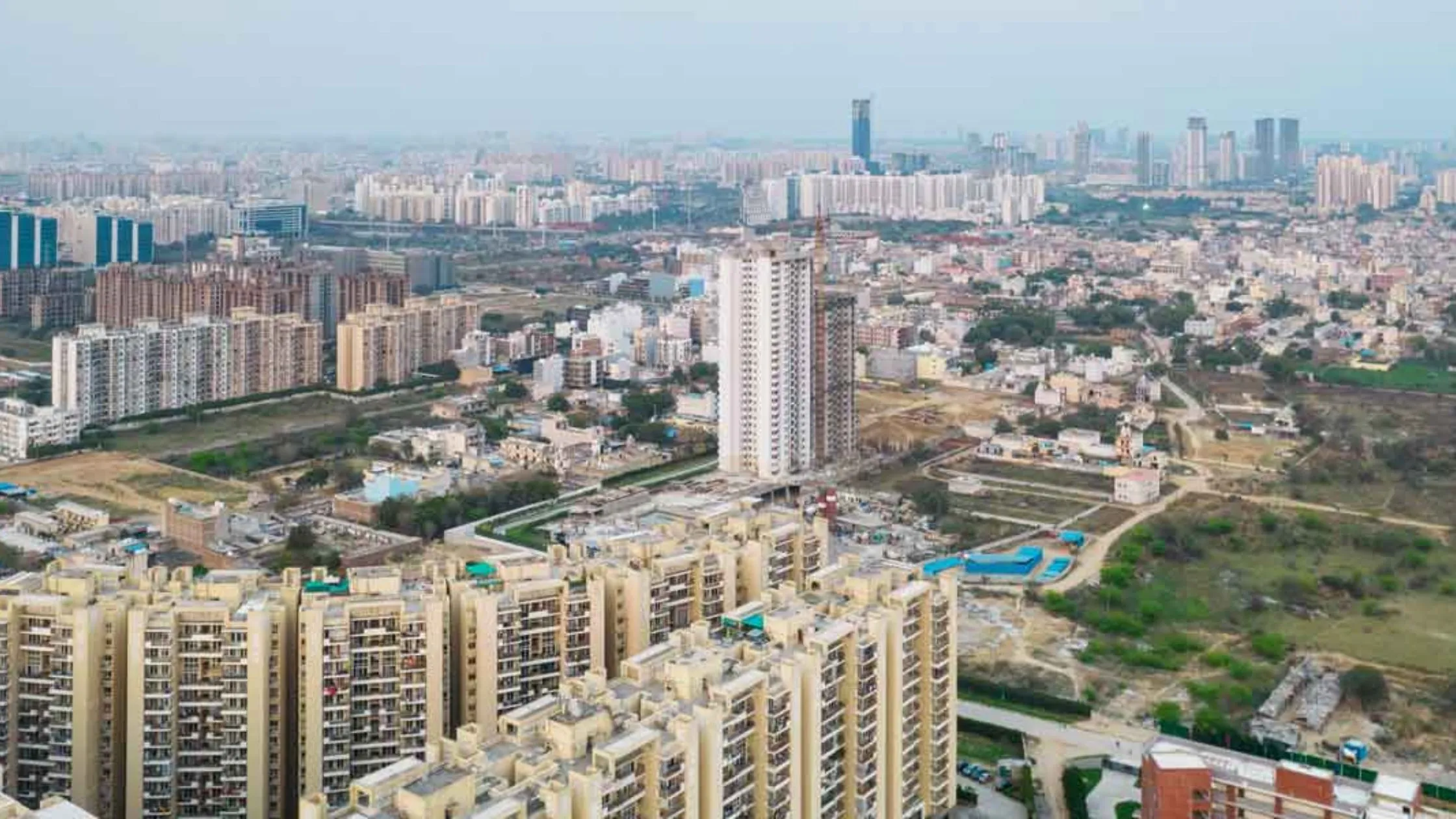Table of Content
- Table of Contents
- 1. Introduction
- 2. Factors Behind Incomplete Real Estate Projects
- 3. Famous Incomplete Real Estate Projects in India
- 4. Impact of Incomplete Projects on Buyers and Investors
- 5. Government Measures to Address Real Estate Issues
- 6. Lessons from Incomplete Real Estate Projects
- Conclusion
Real estate projects often promise grandeur, luxury, and state-of-the-art amenities. However, several ambitious real estate projects in India remain incomplete due to financial issues, legal disputes, or poor planning. These projects, while creating a buzz initially, have become symbols of unfulfilled dreams and challenges in the real estate sector. This article delves into some of these famous incomplete projects, exploring their details, reasons for non-completion, and lessons for future developments.
Table of Contents
- Introduction
- Factors Behind Incomplete Real Estate Projects
- Famous Incomplete Real Estate Projects in India
- Amrapali Dream Valley
- Jaypee Wish Town
- Unitech Projects
- DLF Capital Greens Phase 3
- Orbit Corporation’s Projects in Mumbai
- Lavasa City, Pune
- Impact of Incomplete Projects on Buyers and Investors
- Government Measures to Address Real Estate Issues
- Lessons from Incomplete Real Estate Projects
- Conclusion
1. Introduction
India’s real estate sector has witnessed significant growth in the last few decades, but it has also faced setbacks. Projects worth billions remain incomplete, leaving thousands of homebuyers stranded. This article explores the reasons behind these failures and highlights some notable examples.
2. Factors Behind Incomplete Real Estate Projects
Several factors contribute to the failure of real estate projects. Key reasons include:
|
Factor |
Explanation |
|
Financial Issues |
Lack of funds due to poor planning, mismanagement, or reduced sales. |
|
Legal Disputes |
Court cases and disputes over land acquisition or construction delays. |
|
Regulatory Challenges |
Non-compliance with government regulations or environmental clearances. |
|
Market Conditions |
Economic downturns, reduced demand, or fluctuations in property prices. |
|
Developer Bankruptcy |
Developers filing for insolvency, leaving projects abandoned. |
3. Famous Incomplete Real Estate Projects in India
Here are some of the most talked-about incomplete real estate projects in India:
1. Amrapali Dream Valley (Noida)
- Launch Year: 2011
- Location: Greater Noida West
- Details: Promised over 10,000 affordable housing units.
- Reason for Incompletion:
- Mismanagement of funds by the developer.
- Legal disputes with homebuyers and authorities.
- Impact: Thousands of homebuyers are yet to receive possession of their homes.
2. Jaypee Wish Town (Noida)
- Launch Year: 2007
- Location: Noida Expressway
- Details: Planned as a mega township with residential and commercial units.
- Reason for Incompletion:
- Over-leveraging by the developer.
- Legal and financial challenges.
- Impact: Over 20,000 homebuyers left in limbo.
3. Unitech Projects (Pan-India)
- Launch Year: Multiple projects between 2005-2010.
- Locations: Gurgaon, Noida, and Kolkata.
- Details: Luxury residential and commercial projects.
- Reason for Incompletion:
- Financial mismanagement and legal disputes.
- Bankruptcy of Unitech Limited.
- Impact: Numerous projects abandoned, affecting thousands of buyers.
4. DLF Capital Greens Phase 3 (Delhi)
- Launch Year: 2009
- Location: Moti Nagar, Delhi
- Details: A premium residential project promising world-class amenities.
- Reason for Incompletion:
- Legal disputes regarding environmental clearances.
- Construction delays.
- Impact: Buyers still waiting for possession.
5. Orbit Corporation’s Projects (Mumbai)
- Launch Year: Various projects in the 2010s.
- Location: South Mumbai
- Details: Luxury residential skyscrapers.
- Reason for Incompletion:
- Financial difficulties and bankruptcy of Orbit Corporation.
- Impact: High-profile buyers left stranded.
6. Lavasa City (Pune)
- Launch Year: 2000
- Location: Pune, Maharashtra
- Details: India’s first planned hill city.
- Reason for Incompletion:
- Environmental and regulatory challenges.
- Financial mismanagement.
- Impact: Infrastructure remains incomplete, with many homes unsold.
4. Impact of Incomplete Projects on Buyers and Investors
|
Stakeholder |
Impact |
|
Homebuyers |
Financial loss, emotional distress, and delayed possession. |
|
Investors |
Loss of investment value and reduced confidence in real estate. |
|
Developers |
Bankruptcy, legal troubles, and loss of reputation. |
|
Economy |
Negative impact on the real estate sector and reduced growth potential. |
5. Government Measures to Address Real Estate Issues
The government has implemented several measures to address challenges in the real estate sector:
- RERA (Real Estate Regulatory Authority): Ensures transparency and accountability.
- Insolvency and Bankruptcy Code (IBC): Helps resolve disputes between developers and buyers.
- SWAMIH Fund: Provides funding for stalled projects to ensure completion.
6. Lessons from Incomplete Real Estate Projects
The incomplete projects offer critical lessons for developers, buyers, and policymakers:
|
Lesson |
Explanation |
|
Transparency is Key |
Developers must maintain financial and operational transparency. |
|
Buyer Awareness |
Buyers should verify the developer’s credibility and project approvals before investing. |
|
Strict Regulatory Compliance |
Adherence to government regulations is crucial to avoid delays and legal issues. |
|
Financial Discipline |
Proper fund management ensures timely completion of projects. |
Conclusion
Incomplete real estate projects in India reflect the challenges faced by the sector, impacting thousands of buyers and the overall economy. While government measures and buyer awareness can mitigate risks, the responsibility also lies with developers to deliver on their promises. By learning from past mistakes and implementing stricter regulations, India’s real estate sector can aim for a more transparent and reliable future.
Also Read: Top Indian Cities for NRIs to Invest in Real Estate: A Comprehensive Guide








Ans 1. The main reasons include financial mismanagement, legal disputes, non-compliance with regulations, market fluctuations, and bankruptcy of developers.
Ans 2. Notable examples include Amrapali Dream Valley, Jaypee Wish Town, Lavasa City, Unitech projects, and DLF Capital Greens Phase 3.
Ans 3. Measures include the implementation of RERA, SWAMIH Fund for stalled projects, and resolutions through the Insolvency and Bankruptcy Code (IBC).
Ans 4. RERA ensures transparency, accountability, and timely resolution of disputes between developers and buyers.